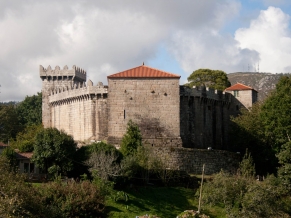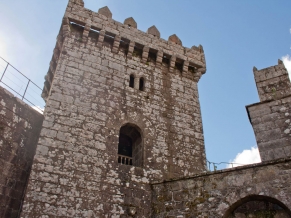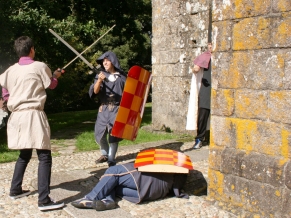- Home
- Experiences
- Places of interest
- The Castle, fortress of Vimianzo
The Castle, fortress of Vimianzo
The Castle of Vimianzo (+43° 6' 40" -9° 1' 52" ) dominates the town. Located on the edge of the town centre, it was built around the 12th or 13th century by the Mariño de Lobeira family. The castle now looks different than it did before, as over the years it has been reconstructed following struggles and changes in ownership.
The biggest structural change to the castle took place at the end of the 15th century, in 1467, when a defining event in the history of Galicia occurred: the Irmandiño War. The people rebelled against the economic pressures and the abuse and violence committed by the feudal lords, and decided to assault castles and forts. Most of them were destroyed or very badly damaged, as was the case of the Castle of Vimianzo, and the high nobility fled Galicia to Castille and Portugal. This event is remembered with a celebration every July: the l Attack on the Castle of Vimianzo.
Shortly after, the nobles who fled Galicia and went to Castille organised and undertook to recover their possessions, which they did in 1469. The Castle was then rebuilt with the work of Basque quarry workers.
Strategic nature
The family of the Counts of Altamira, owners of the Castle, and the Archbishop of Santiago fought over the castle during the 14th and 15th centuries. In fact, the very castle was the prison for Santiago-born archbishop Alfonso de Fonseca II, who they say was imprisoned in a golden cage. One of the reasons for the ongoing struggle was the strategic importance of the castle, because its short distance to the coast made it suitable for supervising the trade routes of the North Sea, the sardine and salt businesses and the spoils of sunken ships.
After many changes in ownership, eventually, in 1973, the castle was bought by the A Coruña Provincial Council, who then restored it and refurbished it so it could be visited.
Every summer, and during the weekends all throughout the year, the Castle hosts a craft fair with live demonstrations, where the work of the bobbin lace makers called palilleiras, basket weavers, goldsmiths and others can be admired.
Information about schedules, contact and others: www.vimianzo.gal/turismo


